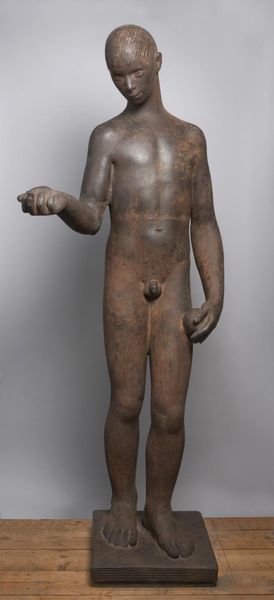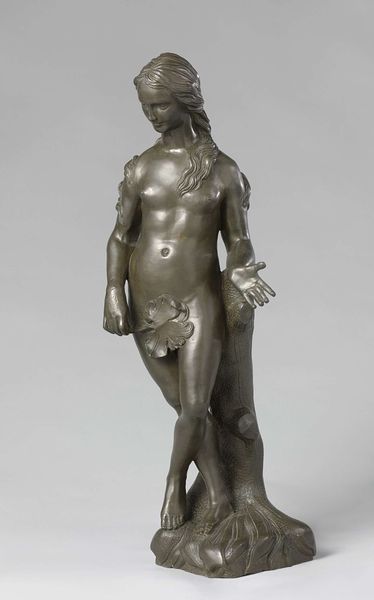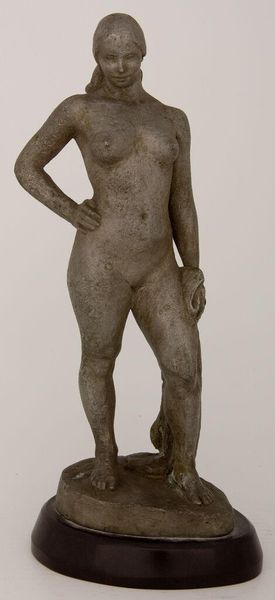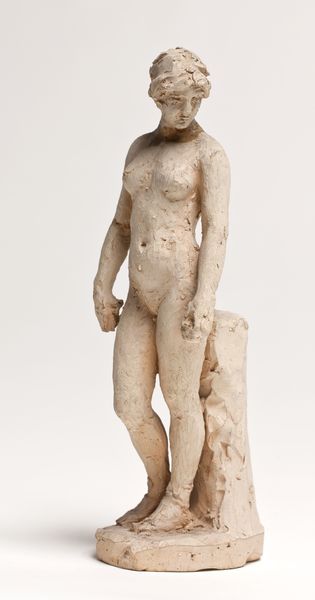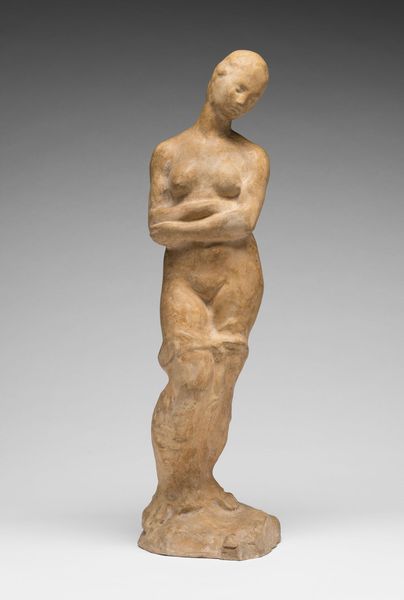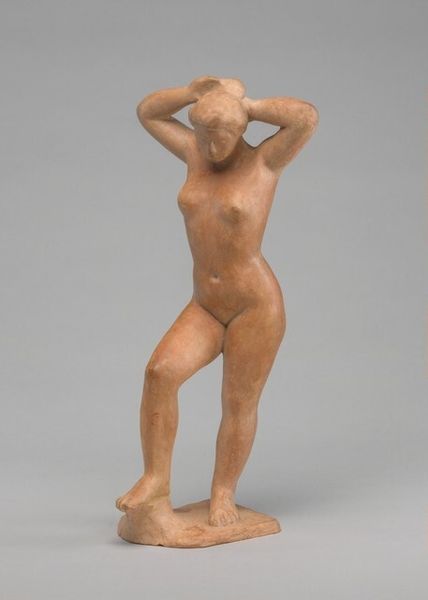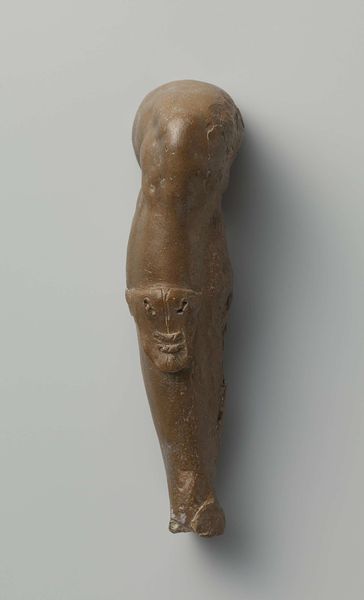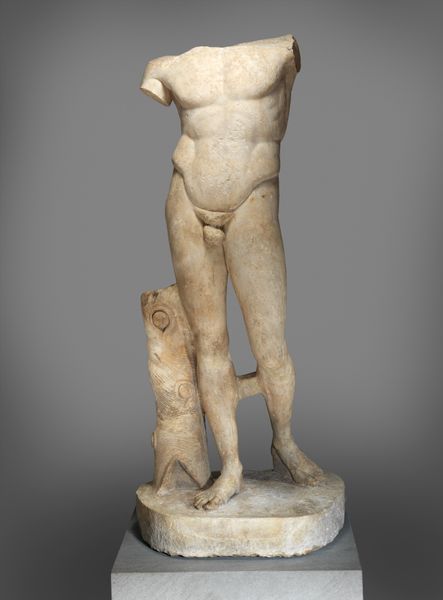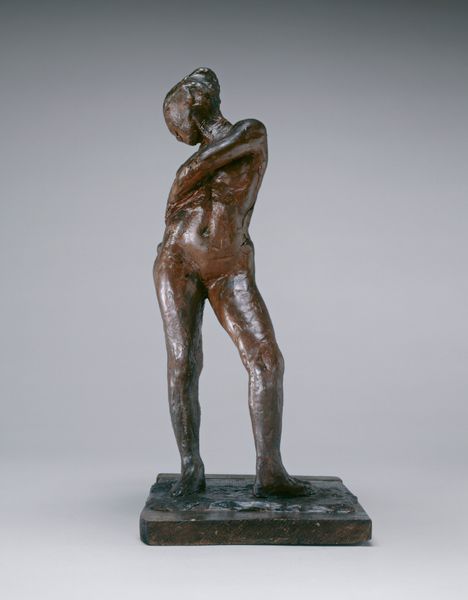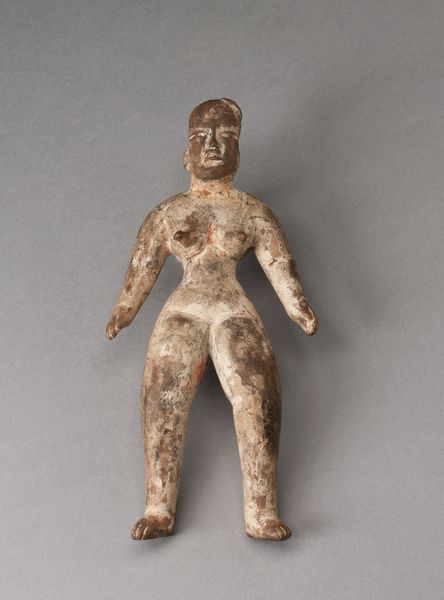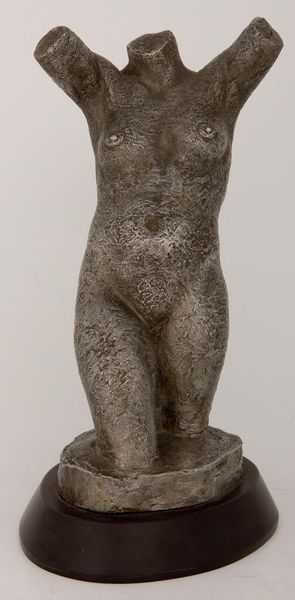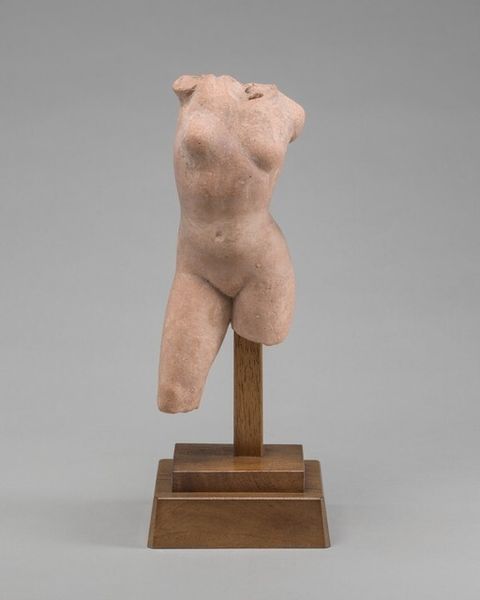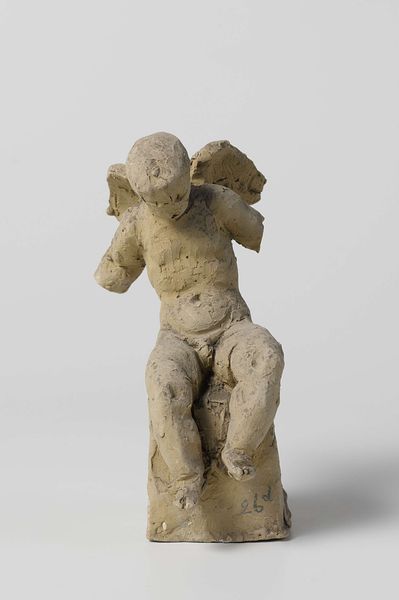
bronze, sculpture
#
bronze
#
mannerism
#
figuration
#
sculpture
#
history-painting
#
academic-art
#
nude
Copyright: Rijks Museum: Open Domain
This study model of a male torso was made by Johan Gregor van der Schardt in the 16th century. Its function was likely for the education of artists within a workshop environment. During the Renaissance, the study of the human body became central to artistic training. The revival of classical ideals led artists to seek a deeper understanding of anatomy and proportion. This wasn't merely an aesthetic pursuit; it was intertwined with the period’s broader intellectual project. The rediscovery of classical texts, coupled with scientific inquiry, fueled a desire to comprehend the natural world. Artists turned to anatomical studies, dissecting cadavers and producing detailed drawings, and sculptures like this one, to inform their work. Here at the Rijksmuseum, you can study other artworks that tell the story of the period’s artistic and intellectual life. Looking closely at the museums' archives, and comparing the statue to contemporary treatises, we can piece together how art schools operated at this time. This process helps us to appreciate the statue in its full cultural context.
Comments
rijksmuseum about 2 years ago
⋮
This group of small models of parts of the body are carefully copied after famous sculptures, in particular by Michelangelo, in Florence and Rome. They came from the workshop of the Nijmegen sculptor Johan Gregor van der Schardt, who had a successful career in Italy, Nuremberg, and Copenhagen. They are extremely rare examples of the, in part autograph, study material of a 16th-century sculptor.
Join the conversation
Join millions of artists and users on Artera today and experience the ultimate creative platform.
